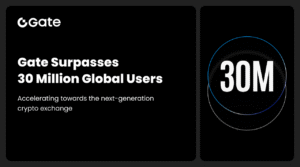**CeFi’s Share of Crypto Funding Falls as Platforms Embrace DeFi Trends**
In a significant shift, the share of crypto funding directed towards centralized finance (CeFi) platforms has declined since its peak in 2021. According to industry data, this trend coincides with a growing adoption of features traditionally popular in decentralized finance (DeFi) platforms.
**Decline in CeFi’s Funding Share**
In the heyday of 2021, CeFi platforms were the dominant recipients of crypto funding. However, as 2023 progresses, their share of the total funding has experienced a notable decline. This shift reflects a changing landscape in the cryptocurrency industry, as investors and consumers increasingly look towards decentralized alternatives for their financial needs.
According to industry analysts, this decline in CeFi funding share can be attributed to several factors. These include a growing awareness and acceptance of DeFi platforms, as well as increasing concerns over privacy and security on centralized platforms. Additionally, the rise of regulatory scrutiny and compliance requirements has also influenced the shift in funding patterns.
**Increasing Adoption of DeFi Features**
Concurrently, the industry has witnessed a notable trend among CeFi platforms as they increasingly adopt features that have been traditionally popular in the DeFi space. These features include yield farming, decentralized lending and borrowing, and algorithmic trading, among others. By integrating these functionalities, CeFi platforms aim to capitalize on the growing popularity of DeFi while retaining their centralized structures.
The adoption of DeFi features by CeFi platforms represents a convergence of the two previously distinct sectors within the cryptocurrency industry. This convergence reflects a broader recognition of the potential benefits offered by DeFi, as well as an acknowledgement of the evolving needs and preferences of cryptocurrency users and investors.
**Implications for the Crypto Industry**
As the dynamics of crypto funding and platform features continue to evolve, the implications for the industry are significant. The declining share of funding directed towards CeFi platforms signals a fundamental shift in investor and consumer behavior, as well as an increasing preference for decentralized financial solutions.
Moreover, the adoption of DeFi features by CeFi platforms highlights the ongoing innovation and adaptation within the cryptocurrency industry. This convergence of CeFi and DeFi not only expands the range of services available to users, but also underscores the industry’s responsiveness to changing market dynamics and consumer preferences.





